-

Jun
09
Interpretive Summary: Influence of yeast-based pre- and probiotics in lactation and nursery diets on nursery pig performance and antimicrobial resistance of fecal Escherichia coli
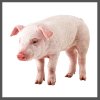
Feeding sows a diet containing live yeast and yeast extract from day 110 of gestation through weaning resulted in progeny that were heavier at weaning and had increased average daily gain and average daily feed intake throughout the nursery period.
Read more
-

Jun
09
Interpretive Summary: Potential effect of two Bacillus probiotic strains on performance and fecal microbiota of breeding sows and their piglets
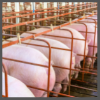
The aim of the present study was to determine if the inclusion of probiotic microorganisms in the mother’s diet during gestation and the lactation period is capable of modifying the performance of mothers and piglets and the possible effect on the intestinal health of piglets after separation from the mother.
Read more
-

Jun
09
Interpretive Summary: Cereal grain fiber composition modifies phosphorus digestibility in grower pigs

The study assessed effects of cereal grains varying in fermentable carbohydrates on non-phytate-P and phytate-P. Phytate is the major binding form of P in plant seed and is incompletely degraded.
Read more
-

Jun
09
Interpretive Summary: Influence of hempseed cake inclusion on growth performance, carcass characteristics, feeding behavior, and blood parameters in finishing heifers
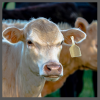
This experiment evaluated the effects of dietary inclusion of hempseed cake in comparison with dried corn distillers grains plus solubles (DDGS) on growth performance, feeding behavior, carcass characteristics, and blood parameters in finishing heifers.
Read more
-

Jun
09
Interpretive Summary: Corn processing, flake density, and starch retrogradation influence ruminal solubility of starch, fiber, protein, and minerals
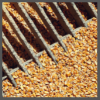
Grain processing has been used for decades to improve digestibility of finishing cattle diets, leading to improved growth performance and feed efficiency.
Read more
-

Jun
02
Interpretive Summary: Effect of maternal dietary starch-to-fat ratio and daily energy intake during late pregnancy on the performance and lipid metabolism of primiparous sows and newborn piglets
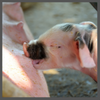
Given the growing concern regarding nutrition during gestation, the present study was designed to investigate the effects of energy on the reproductive performance and lipid metabolism of primiparous sows.
Read more
-

Jun
02
Interpretive Summary: Maternal immune activation and dietary soy isoflavone supplementation influence pig immune function but not muscle fiber formation
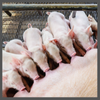
Gestational health challenges may influence growth performance and immunity of offspring pigs during postnatal life. In particular, porcine reproductive and respiratory syndrome virus (PRRSV) is endemic in the U.S. herd, but its effects on surviving offspring pigs are largely unknown.
Read more
-

Jun
02
Interpretive Summary: Effects of supplementation rate of an extruded dried distillers’ grains cube fed to growing heifers on voluntary intake and digestibility of bermudagrass hay

Growing cattle are oftentimes provided supplemental concentrate as a source of protein and energy in order to meet performance goals when consuming low-quality forages. The effects of supplemental concentrate on forage intake vary, which may be related to the quality of forage and the characteristics of the supplement being evaluated.
Read more
-

Jun
02
Interpretive Summary: Maternal nutrient restriction and over-feeding during gestation alter expression of key factors involved in placental development and vascularization
.png?sfvrsn=ca584dd1_0)
Too little or too much food during gestation can lead to poor growth and health of the resulting offspring. The placenta is an important source of nutrient supply for the fetus and poor maternal diet can impair placenta growth and function.
Read more
-

Jun
02
Interpretive Summary: Naturally occurring androgen excess cows are present in dairy and beef herds and have similar characteristics to women with PCOS
.png?sfvrsn=445f4dd1_0)
Androgen steroid hormones, normally present in the male, but produced in excess in the female, can result in inflammation and dysfunction of tissues, which, in turn, can lead to ovulatory dysfunction.
Read more
-

Jun
02
Interpretive Summary: Short Communication: Influence of estrus activity and reproductive tract size and position scores on fertility in Bos indicus and Bos taurus suckled beef cows
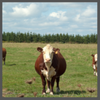
The livelihood of a cow-calf producer relies on reproductively sound cattle that give birth to live offspring once a year. Two factors, pregnancy rate and pregnancy loss, are informative measures of fertility.
Read more
-

Jun
02
Interpretive Summary: Medroxyprogesterone acetate in reindeer bulls: testes histology, cfos activity in the brain, breeding success, and semen quality

A single 400 mg dose of MPA given to reindeer bulls just before the onset of rut eliminates aggressive behavior and suppresses androgen concentrations without dramatic differences in the gross or histological structure of the testes within the first 30 d of treatment.
Read more
-

Jun
02
Interpretive Summary: In vivo investigation of ruminant placenta function and physiology—a review
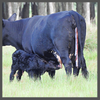
Optimal placental function is required for offspring to reach their genetic potential in utero, and functional placental insufficiency not only results in increased offspring morbidity and mortality, but can impact production traits long-term.
Read more
-

May
26
White House to hold conference on Hunger, Nutrition, and Health
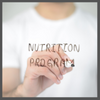
For the first time in more than 50 years, The United States White House announced it will hold a conference on hunger, nutrition, and health. This conference comes as The White House has expressed its commitment to end hunger, improve nutrition and physical activity, reduce diet-related diseases, and close disparity gaps by 2030.
Read more
-

May
26
USDA updates 3 key crop insurance options for livestock producers
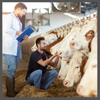
The United States Department of Agriculture (USDA) has updated three key crop insurance options for livestock producers: the Dairy Revenue Protection (DRP), Livestock Gross Margin (LGM), and Livestock Risk Protection (LRP).
Read more
-

May
26
Ukraine emergency funds calls for $500M for US producers

The Biden Administration recently requested Congress to supply emergency supplemental funding, due to the war in Ukraine. In the $33 billion supplemental requests, the administration is seeking $500 million in food production assistance for U.S. farmers to incentivize additional production to offset potential shortfalls from Ukraine’s crop.
Read more
-

May
26
Study compares vegetarian diets verses traditional diets in children

A new study published in the journal Pediatrics by researchers at The University of Toronto, found children who eat vegetarian diets have similar growth outcomes to children who eat meat.
Read more
-

May
26
Poll shows people prefer meat over substitutes

On average, 68% of adults across 31 countries said they are concerned about climate change in their country, yet only 44% say they are likely to eat less meat or replace the meat in some meals with alternatives such as beans to attempt to limit their personal contribution to climate change.
Read more
-

May
26
New research highlights blue light technology on foodborne pathogens
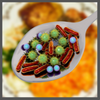
Researchers from The University of Georgia’s (UGA) Center for Food Safety have begun a new study to examine the effectiveness of antimicrobial blue light technology to reduce the foodborne pathogens that cause food poisoning.
Read more
-

May
26
Flavored milk will be allowed in NY schools

The International Dairy Foods Association (IDFA) has advocated for the inclusion of flavored milk in NYC schools. “I am pleased to see Mayor Adams following the lead of parents, physicians, and dietitians, all of whom widely support offering low-fat flavored milk to students in our public schools,” said Michael Dykes, D.V.M., president and CEO of IDFA.
Read more
 JunInterpretive Summary: Influence of yeast-based pre- and probiotics in lactation and nursery diets on nursery pig performance and antimicrobial resistance of fecal Escherichia coli
JunInterpretive Summary: Influence of yeast-based pre- and probiotics in lactation and nursery diets on nursery pig performance and antimicrobial resistance of fecal Escherichia coli Feeding sows a diet containing live yeast and yeast extract from day 110 of gestation through weaning resulted in progeny that were heavier at weaning and had increased average daily gain and average daily feed intake throughout the nursery period.
Feeding sows a diet containing live yeast and yeast extract from day 110 of gestation through weaning resulted in progeny that were heavier at weaning and had increased average daily gain and average daily feed intake throughout the nursery period. JunInterpretive Summary: Potential effect of two Bacillus probiotic strains on performance and fecal microbiota of breeding sows and their piglets
JunInterpretive Summary: Potential effect of two Bacillus probiotic strains on performance and fecal microbiota of breeding sows and their piglets The aim of the present study was to determine if the inclusion of probiotic microorganisms in the mother’s diet during gestation and the lactation period is capable of modifying the performance of mothers and piglets and the possible effect on the intestinal health of piglets after separation from the mother.
The aim of the present study was to determine if the inclusion of probiotic microorganisms in the mother’s diet during gestation and the lactation period is capable of modifying the performance of mothers and piglets and the possible effect on the intestinal health of piglets after separation from the mother. JunInterpretive Summary: Cereal grain fiber composition modifies phosphorus digestibility in grower pigs
JunInterpretive Summary: Cereal grain fiber composition modifies phosphorus digestibility in grower pigs The study assessed effects of cereal grains varying in fermentable carbohydrates on non-phytate-P and phytate-P. Phytate is the major binding form of P in plant seed and is incompletely degraded.
The study assessed effects of cereal grains varying in fermentable carbohydrates on non-phytate-P and phytate-P. Phytate is the major binding form of P in plant seed and is incompletely degraded. JunInterpretive Summary: Influence of hempseed cake inclusion on growth performance, carcass characteristics, feeding behavior, and blood parameters in finishing heifers
JunInterpretive Summary: Influence of hempseed cake inclusion on growth performance, carcass characteristics, feeding behavior, and blood parameters in finishing heifers This experiment evaluated the effects of dietary inclusion of hempseed cake in comparison with dried corn distillers grains plus solubles (DDGS) on growth performance, feeding behavior, carcass characteristics, and blood parameters in finishing heifers.
This experiment evaluated the effects of dietary inclusion of hempseed cake in comparison with dried corn distillers grains plus solubles (DDGS) on growth performance, feeding behavior, carcass characteristics, and blood parameters in finishing heifers. JunInterpretive Summary: Corn processing, flake density, and starch retrogradation influence ruminal solubility of starch, fiber, protein, and minerals
JunInterpretive Summary: Corn processing, flake density, and starch retrogradation influence ruminal solubility of starch, fiber, protein, and minerals Grain processing has been used for decades to improve digestibility of finishing cattle diets, leading to improved growth performance and feed efficiency.
Grain processing has been used for decades to improve digestibility of finishing cattle diets, leading to improved growth performance and feed efficiency. JunInterpretive Summary: Effect of maternal dietary starch-to-fat ratio and daily energy intake during late pregnancy on the performance and lipid metabolism of primiparous sows and newborn piglets
JunInterpretive Summary: Effect of maternal dietary starch-to-fat ratio and daily energy intake during late pregnancy on the performance and lipid metabolism of primiparous sows and newborn piglets Given the growing concern regarding nutrition during gestation, the present study was designed to investigate the effects of energy on the reproductive performance and lipid metabolism of primiparous sows.
Given the growing concern regarding nutrition during gestation, the present study was designed to investigate the effects of energy on the reproductive performance and lipid metabolism of primiparous sows. JunInterpretive Summary: Maternal immune activation and dietary soy isoflavone supplementation influence pig immune function but not muscle fiber formation
JunInterpretive Summary: Maternal immune activation and dietary soy isoflavone supplementation influence pig immune function but not muscle fiber formation Gestational health challenges may influence growth performance and immunity of offspring pigs during postnatal life. In particular, porcine reproductive and respiratory syndrome virus (PRRSV) is endemic in the U.S. herd, but its effects on surviving offspring pigs are largely unknown.
Gestational health challenges may influence growth performance and immunity of offspring pigs during postnatal life. In particular, porcine reproductive and respiratory syndrome virus (PRRSV) is endemic in the U.S. herd, but its effects on surviving offspring pigs are largely unknown. JunInterpretive Summary: Effects of supplementation rate of an extruded dried distillers’ grains cube fed to growing heifers on voluntary intake and digestibility of bermudagrass hay
JunInterpretive Summary: Effects of supplementation rate of an extruded dried distillers’ grains cube fed to growing heifers on voluntary intake and digestibility of bermudagrass hay Growing cattle are oftentimes provided supplemental concentrate as a source of protein and energy in order to meet performance goals when consuming low-quality forages. The effects of supplemental concentrate on forage intake vary, which may be related to the quality of forage and the characteristics of the supplement being evaluated.
Growing cattle are oftentimes provided supplemental concentrate as a source of protein and energy in order to meet performance goals when consuming low-quality forages. The effects of supplemental concentrate on forage intake vary, which may be related to the quality of forage and the characteristics of the supplement being evaluated. JunInterpretive Summary: Maternal nutrient restriction and over-feeding during gestation alter expression of key factors involved in placental development and vascularization
JunInterpretive Summary: Maternal nutrient restriction and over-feeding during gestation alter expression of key factors involved in placental development and vascularization.png?sfvrsn=ca584dd1_0) Too little or too much food during gestation can lead to poor growth and health of the resulting offspring. The placenta is an important source of nutrient supply for the fetus and poor maternal diet can impair placenta growth and function.
Too little or too much food during gestation can lead to poor growth and health of the resulting offspring. The placenta is an important source of nutrient supply for the fetus and poor maternal diet can impair placenta growth and function. JunInterpretive Summary: Naturally occurring androgen excess cows are present in dairy and beef herds and have similar characteristics to women with PCOS
JunInterpretive Summary: Naturally occurring androgen excess cows are present in dairy and beef herds and have similar characteristics to women with PCOS.png?sfvrsn=445f4dd1_0) Androgen steroid hormones, normally present in the male, but produced in excess in the female, can result in inflammation and dysfunction of tissues, which, in turn, can lead to ovulatory dysfunction.
Androgen steroid hormones, normally present in the male, but produced in excess in the female, can result in inflammation and dysfunction of tissues, which, in turn, can lead to ovulatory dysfunction. JunInterpretive Summary: Short Communication: Influence of estrus activity and reproductive tract size and position scores on fertility in Bos indicus and Bos taurus suckled beef cows
JunInterpretive Summary: Short Communication: Influence of estrus activity and reproductive tract size and position scores on fertility in Bos indicus and Bos taurus suckled beef cows The livelihood of a cow-calf producer relies on reproductively sound cattle that give birth to live offspring once a year. Two factors, pregnancy rate and pregnancy loss, are informative measures of fertility.
The livelihood of a cow-calf producer relies on reproductively sound cattle that give birth to live offspring once a year. Two factors, pregnancy rate and pregnancy loss, are informative measures of fertility. JunInterpretive Summary: Medroxyprogesterone acetate in reindeer bulls: testes histology, cfos activity in the brain, breeding success, and semen quality
JunInterpretive Summary: Medroxyprogesterone acetate in reindeer bulls: testes histology, cfos activity in the brain, breeding success, and semen quality A single 400 mg dose of MPA given to reindeer bulls just before the onset of rut eliminates aggressive behavior and suppresses androgen concentrations without dramatic differences in the gross or histological structure of the testes within the first 30 d of treatment.
A single 400 mg dose of MPA given to reindeer bulls just before the onset of rut eliminates aggressive behavior and suppresses androgen concentrations without dramatic differences in the gross or histological structure of the testes within the first 30 d of treatment. JunInterpretive Summary: In vivo investigation of ruminant placenta function and physiology—a review
JunInterpretive Summary: In vivo investigation of ruminant placenta function and physiology—a review Optimal placental function is required for offspring to reach their genetic potential in utero, and functional placental insufficiency not only results in increased offspring morbidity and mortality, but can impact production traits long-term.
Optimal placental function is required for offspring to reach their genetic potential in utero, and functional placental insufficiency not only results in increased offspring morbidity and mortality, but can impact production traits long-term. MayWhite House to hold conference on Hunger, Nutrition, and Health
MayWhite House to hold conference on Hunger, Nutrition, and Health For the first time in more than 50 years, The United States White House announced it will hold a conference on hunger, nutrition, and health. This conference comes as The White House has expressed its commitment to end hunger, improve nutrition and physical activity, reduce diet-related diseases, and close disparity gaps by 2030.
For the first time in more than 50 years, The United States White House announced it will hold a conference on hunger, nutrition, and health. This conference comes as The White House has expressed its commitment to end hunger, improve nutrition and physical activity, reduce diet-related diseases, and close disparity gaps by 2030. MayUSDA updates 3 key crop insurance options for livestock producers
MayUSDA updates 3 key crop insurance options for livestock producers The United States Department of Agriculture (USDA) has updated three key crop insurance options for livestock producers: the Dairy Revenue Protection (DRP), Livestock Gross Margin (LGM), and Livestock Risk Protection (LRP).
The United States Department of Agriculture (USDA) has updated three key crop insurance options for livestock producers: the Dairy Revenue Protection (DRP), Livestock Gross Margin (LGM), and Livestock Risk Protection (LRP). MayUkraine emergency funds calls for $500M for US producers
MayUkraine emergency funds calls for $500M for US producers The Biden Administration recently requested Congress to supply emergency supplemental funding, due to the war in Ukraine. In the $33 billion supplemental requests, the administration is seeking $500 million in food production assistance for U.S. farmers to incentivize additional production to offset potential shortfalls from Ukraine’s crop.
The Biden Administration recently requested Congress to supply emergency supplemental funding, due to the war in Ukraine. In the $33 billion supplemental requests, the administration is seeking $500 million in food production assistance for U.S. farmers to incentivize additional production to offset potential shortfalls from Ukraine’s crop. MayStudy compares vegetarian diets verses traditional diets in children
MayStudy compares vegetarian diets verses traditional diets in children A new study published in the journal Pediatrics by researchers at The University of Toronto, found children who eat vegetarian diets have similar growth outcomes to children who eat meat.
A new study published in the journal Pediatrics by researchers at The University of Toronto, found children who eat vegetarian diets have similar growth outcomes to children who eat meat. MayPoll shows people prefer meat over substitutes
MayPoll shows people prefer meat over substitutes On average, 68% of adults across 31 countries said they are concerned about climate change in their country, yet only 44% say they are likely to eat less meat or replace the meat in some meals with alternatives such as beans to attempt to limit their personal contribution to climate change.
On average, 68% of adults across 31 countries said they are concerned about climate change in their country, yet only 44% say they are likely to eat less meat or replace the meat in some meals with alternatives such as beans to attempt to limit their personal contribution to climate change. MayNew research highlights blue light technology on foodborne pathogens
MayNew research highlights blue light technology on foodborne pathogens Researchers from The University of Georgia’s (UGA) Center for Food Safety have begun a new study to examine the effectiveness of antimicrobial blue light technology to reduce the foodborne pathogens that cause food poisoning.
Researchers from The University of Georgia’s (UGA) Center for Food Safety have begun a new study to examine the effectiveness of antimicrobial blue light technology to reduce the foodborne pathogens that cause food poisoning. MayFlavored milk will be allowed in NY schools
MayFlavored milk will be allowed in NY schools The International Dairy Foods Association (IDFA) has advocated for the inclusion of flavored milk in NYC schools. “I am pleased to see Mayor Adams following the lead of parents, physicians, and dietitians, all of whom widely support offering low-fat flavored milk to students in our public schools,” said Michael Dykes, D.V.M., president and CEO of IDFA.
The International Dairy Foods Association (IDFA) has advocated for the inclusion of flavored milk in NYC schools. “I am pleased to see Mayor Adams following the lead of parents, physicians, and dietitians, all of whom widely support offering low-fat flavored milk to students in our public schools,” said Michael Dykes, D.V.M., president and CEO of IDFA.



